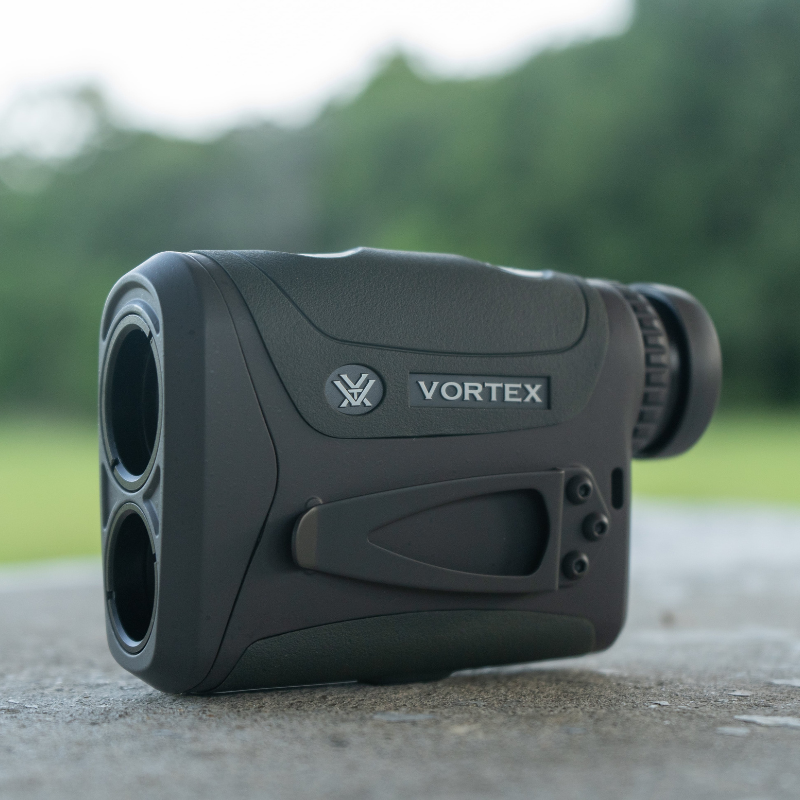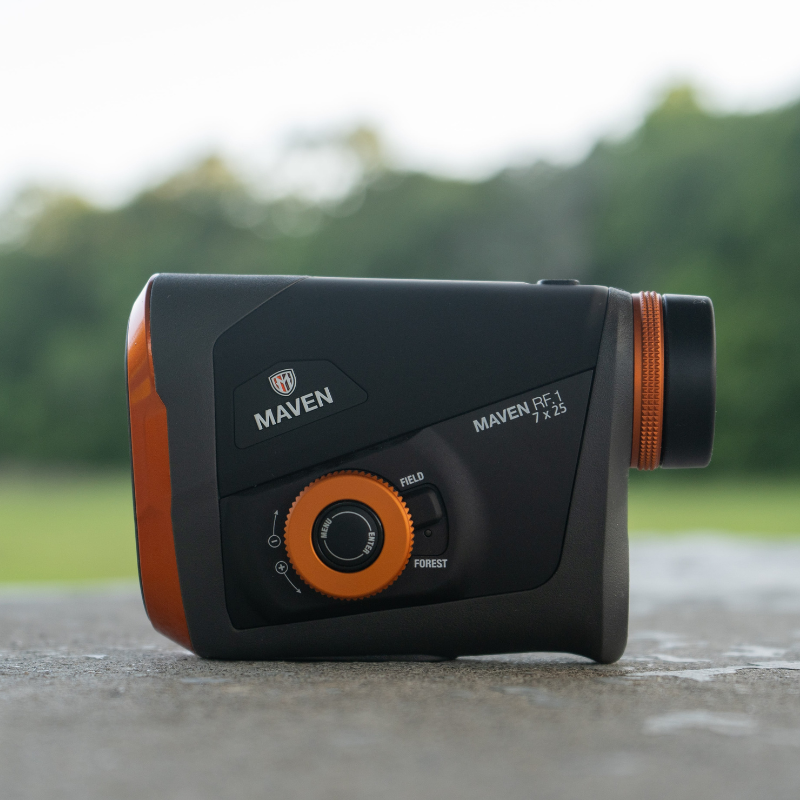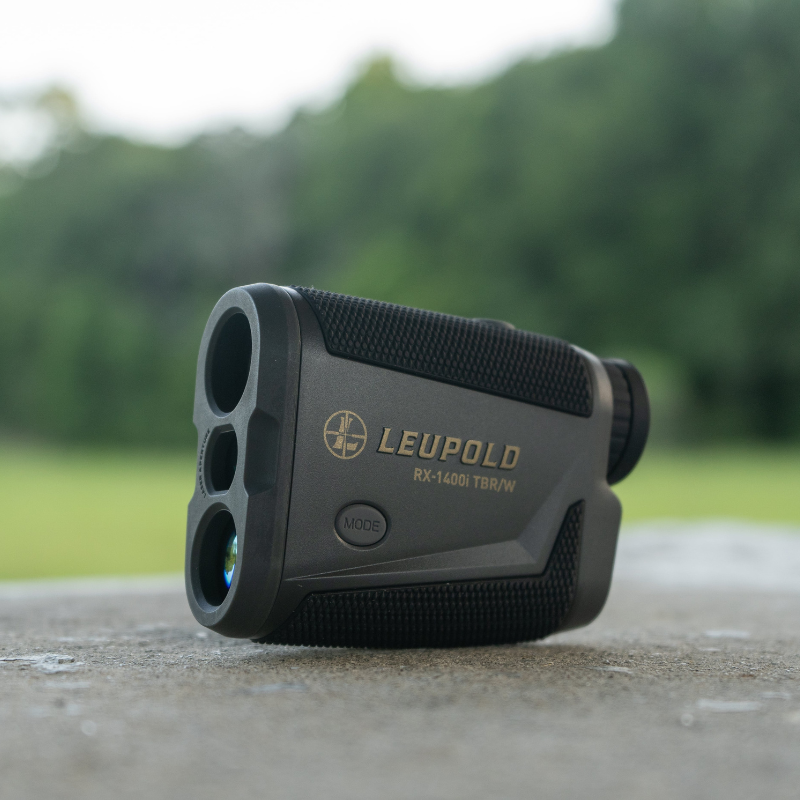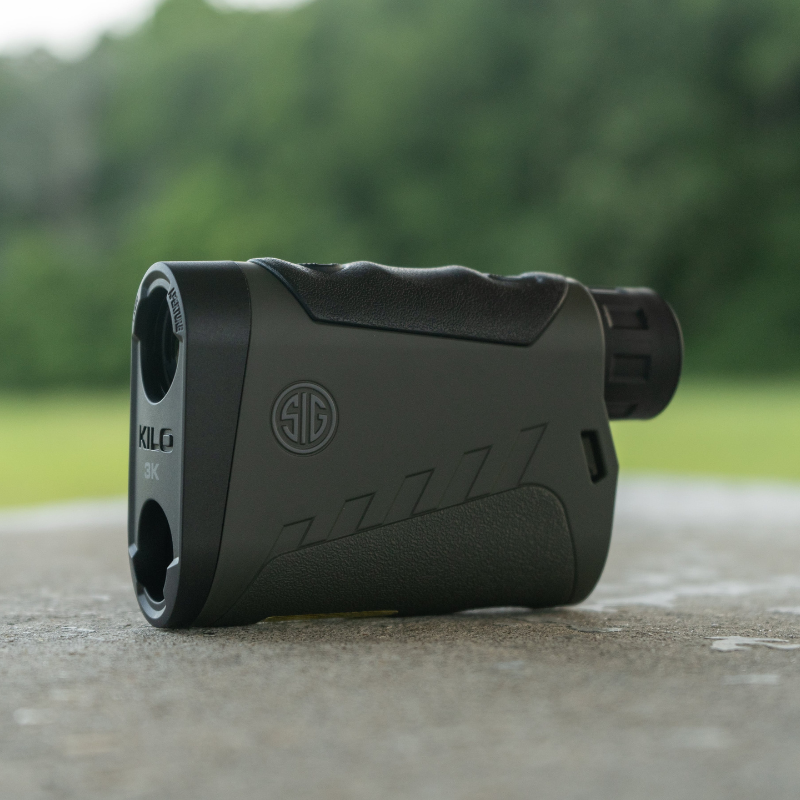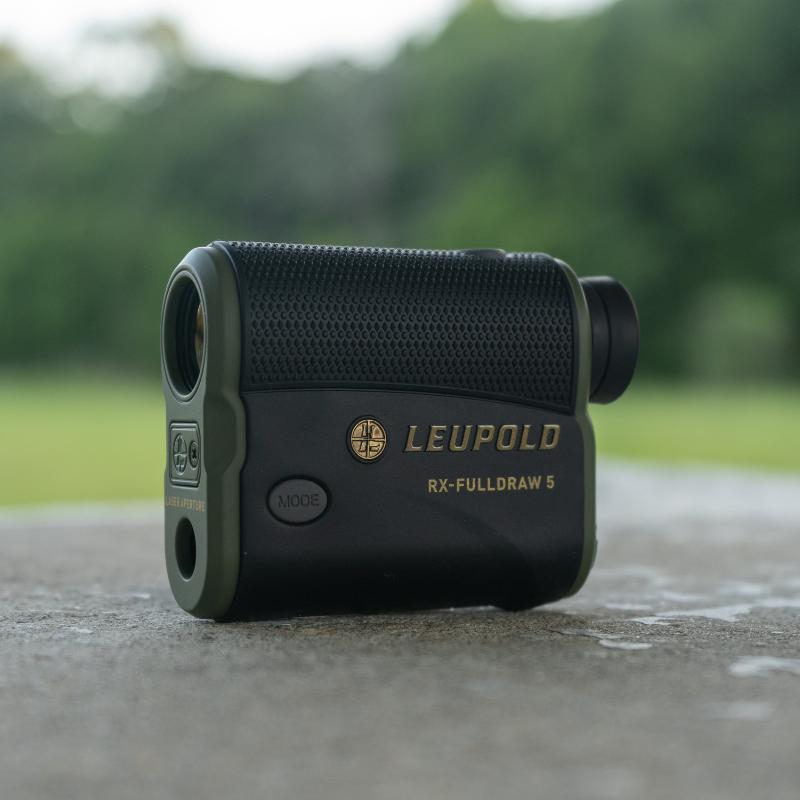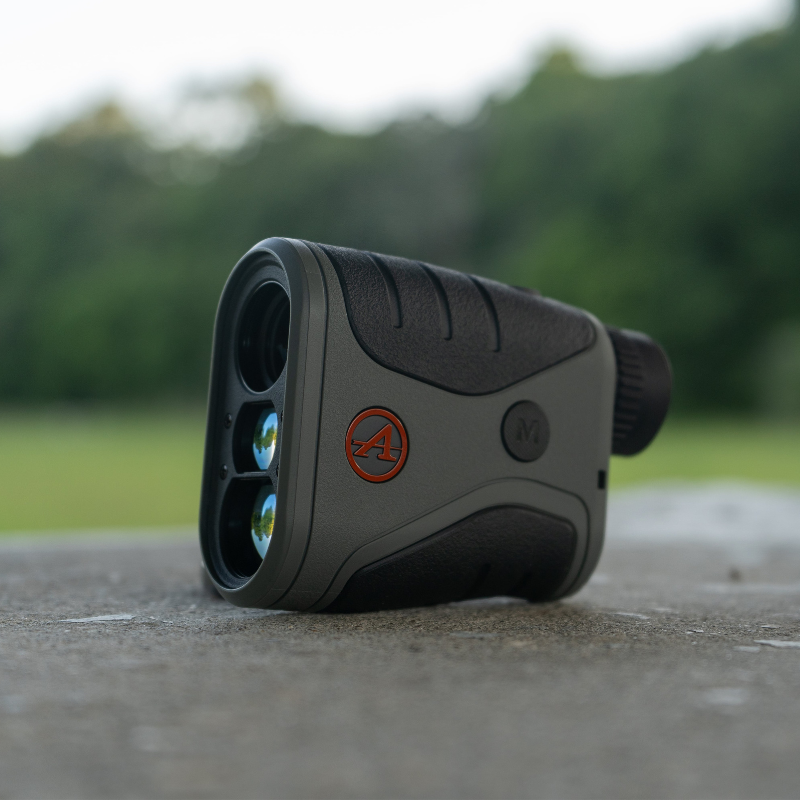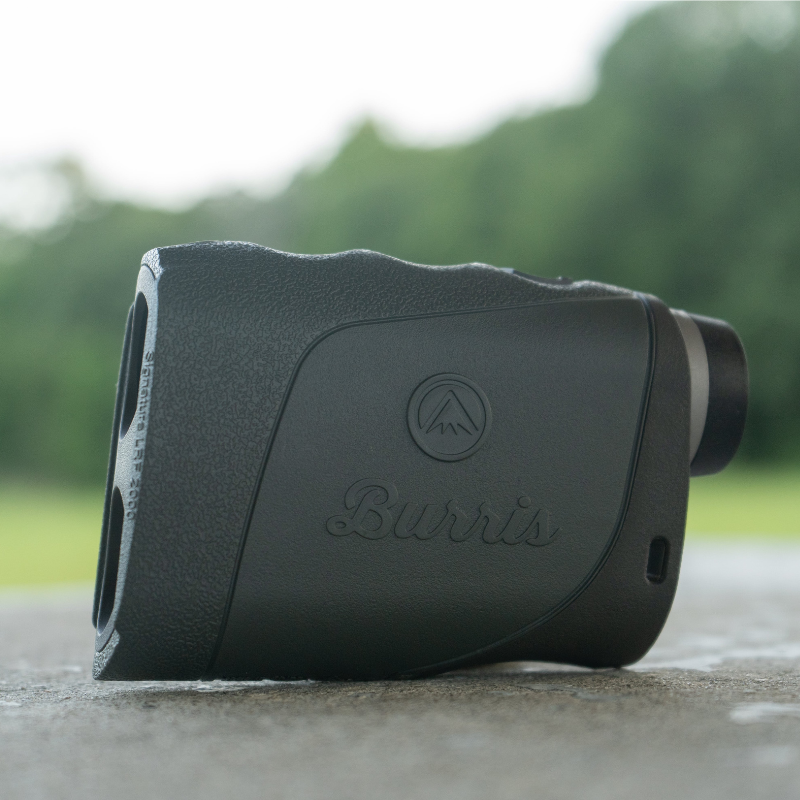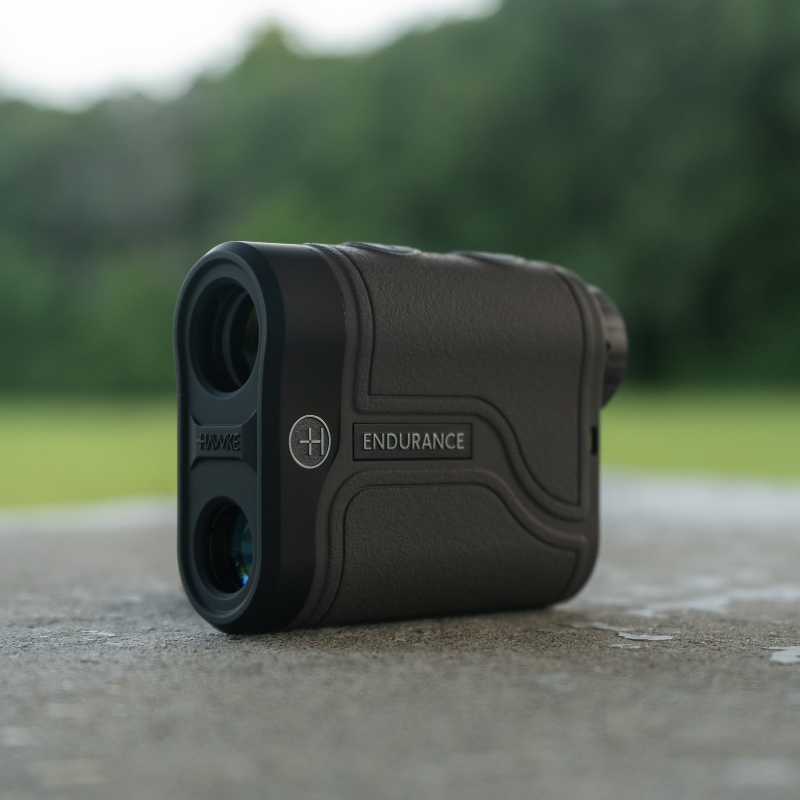
Performing successful, ethical shots—at any distance—requires precise placement. Whether you’re bowhunting or long-range shooting, rangefinders are critical for that kind of accuracy. Of course, like any optic, your hunting and shooting needs (and budget) will determine whether you need to spend a few hundred or several hundred dollars on a laser rangefinder.
Long-distance shooters who need ultra-precise ballistic data won’t find many options in this category. However, for hunters who need quick readings in the treestand or medium-long range rifle hunts, the market offers plenty of options that won’t break the break. To see what the best rangefinders under $500 offer, we tested eight different models for their ranging capabilities, optical performance, and overall value.
Testing the Best Rangefinders Under $500
While a few rangefinders under the $500 category will provide accurate and consistent long-distance readings and data, most of them excel within 1000 to 2000 yards. If you need ballistic technology and ranging capabilities well beyond that, you’ll (typically) pay extra.
For a budget rangefinder (I realize that’s a bit of a stretch), you’ll need to make a few concessions. With the general hunter in mind, someone who might bow hunt and shoot a rifle at medium-long distances, I tested seven of the best rangefinders under $500 for their ranging capabilities, optical performance, and overall value. Beyond these criteria, other features and extended capabilities added bonus points.
Ranging Capabilities
A rangefinder’s capabilities include its minimum and maximum distances, angle compensation technology, response times, and/or ballistic calculations. I was only able to range objects out to 2000 yards for this test. However, rangefinders in this category perform well at that distance. If you’re expecting precise (or any) ranging capabilities and ballistic data beyond that, expect to fork over more cash.
Optical Performance
Ranging critters, especially at last light, won’t do you any good if you can’t see them. But you also don’t need the resolution capabilities of high-end binoculars. There’s also the interface component, which includes a rangefinder’s menu, reticle options, and modes. Rangefinders received scores based on their lowlight performance, optical quality, and interface.
Value
This category considers the previous ones in relation to each rangefinder’s price, including accessories, technology, tripod adaptability, and manufacturer warranty.
Scoring
In each category, rangefinders received a score of 1-5, with 5 being the highest.
The best rangefinders under $500 we recommend
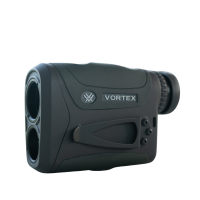 Vortex Razor HD 4000
Best Overall
|
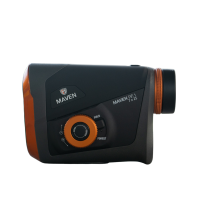 Maven RF.1
Best Controls
|
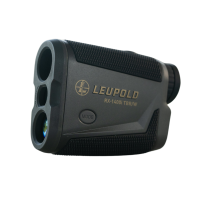 Leupold 1400i TBR/W Gen 2
Best Budget
|
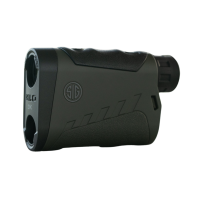 Sig Sauer KILO3K
Best Features
|
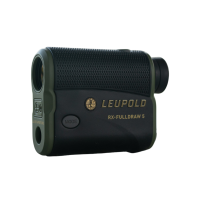 Leupold Fulldraw 5
Best for Bowhunting
|
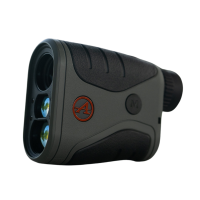 Athlon Midas 1 Mile
Best Entry Level
|
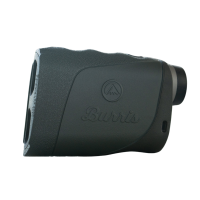 Burris Signature LRF 2000
|
 Hawke Endurance 1500
|
|
|---|---|---|---|---|---|---|---|---|
| Score | 13/15 | 12/15 | 10/15 | 9/15 | 9/15 | 10/15 | 9/15 | 8/15 |
| Ranging Capabilities | 4 | 4 | 3 | 4 | 4 | 3 | 3 | 2 |
| Optical Performance | 4 | 4 | 2 | 2 | 3 | 3 | 3 | 3 |
| Value | 5 | 4 | 5 | 3 | 2 | 4 | 3 | 3 |
| Price | $499* | $450* | $199* | $350* | $499* | $289* | $299* | $329* |
| Field Notes | Field Notes | Field Notes | Field Notes | Field Notes | Field Notes | Field Notes | Field Notes |
Field notes from the MeatEater Crew
Best Overall
Score: 13/15
Specifications
- Magnification: 7x
- Objective Lens: 25mm
- Weight: 9.9 oz.
- Advertised Ranging: 4000 yds.
- Tripod Adaptable: Yes
- Price: $499
Pros
- Good resolution for a rangefinder
- Bright glass
- Fastest response times in test
- Pocket clip
- Vortex VIP warranty
Cons
- Bulky
- One reticle option
While the Maven RF.1 and Vortex Razor HD 4000 stood out from the rest of the pack, the Razor’s speedy response times (fastest in test), great glass, and overall value earned it the top spot. Even if you’re not limited to a $500 budget, the Razor HD 4000 would make a great option if you wanted to save a few bucks.
The Razor HD 4000 is a multi-season rangefinder. I consistently ranged reflective targets at 2000 yards with the Razor, which shouldn’t be surprising since it boasts a 4000-yard range claim. Its super close (5 yards) readings and long-range capabilities mean you can run this LRF from your state’s bow opener until the last week of gun season. It was also one of the few “budget” rangefinders to feature a tripod adapter. While its $499 price runs higher than most in the test, it’s still cheaper than the RF.1 and Fulldraw 5. The Razor also features the best carry case in the test, which only added to its overall value.
Intuitive menu options and controls made it easy to adjust the settings without cracking the Razor’s user manual. Some users might prefer more than one reticle option, and the Razor feels a bit blocky. User’s with smaller hands or archers who need to make quick one-handed ranges might have trouble holding this unit.
If you’re looking for more ballistic data and capabilities, you’ll have to upgrade to the GB version, though you’ll spend double. Otherwise, this rangefinder’s streamlined interface, reliable ranging, bright glass, and VIP warranty make the Vortex Razor HD 4000 one of the best rangefinders under $500.
Best Controls
Score: 12/15
Specifications
- Magnification: 7x
- Objective Lens: 25mm
- Weight: 10 oz.
- Advertised Ranging: 5-4500 yds.
- Tripod Adaptable: Yes
- Price: $450
Pros
- Good glass
- Speedy response times
- Intuitive menu controls
- Unconditional Lifetime Warranty
Cons
- Heaviest rangefinder in test
- Not optimal for treestand hunters
Like the Vortex Razor HD 4000, the Maven RF.1 has good glass, intuitive controls, and speedy response times. It was a close second to the Vortex, but the difference in resolution gave the Razor the nod.
Let’s start with the obvious. The menu dial on the side quite literally set it apart from the rest of the rangefinders in the test. Unlike other rangefinders, the Maven RF.1’s side dial makes it easy to adjust the brightness settings or toggle through the menu. It’s a welcome feature, along with the Field/Forest switch, that eliminates the headache of only having one or two buttons to sift through various menus and modes, especially if you need to do so quickly. While the side dial makes for quick adjustments, it requires both hands to do so. This isn’t ideal for treestand hunters who might need to make adjustments with a bow in hand.
Like the Vortex Razor, the RF.1 consistently recorded ranges as close as four yards, which I verified. Because I was limited to a range of 2000 yards, I couldn’t confirm the RF.1’s 4500-yard range claim. I did, however, record consistent 2000-yard ranges on targets, which is more range than the average hunter or shooter requires.
Even with multiple modes and indicators, the RF.1 boasts an uncrowded display, and the five reticle options allow you to fine-tune this as well. Glass in the RF.1 also stood out. While its lowlight performance resembled the Vortex Razor, its resolution lagged just behind.
I have a hard time knocking the RF.1 for not including a case (it does include a microfiber bag). After all, most hunters and shooters typically use some type of bino harness and rangefinder pouch, which I’m sure Maven considers. Still, for $450, a hard case would be a nice addition.
Best Budget
Score: 10/15
Specifications
- Magnification: 5x
- Objective Lens: 21mm
- Weight: 5.1 oz.
- Advertised Ranging: 6-1400 yds.
- Tripod Adaptable: No
- Price: $199
Pros
- Excellent Value
- Small footprint
- Delivered advertised ranging
- Bow Mode and Flightpath Technology
Cons
- Blue tint in glass
- Limited ranging capabilities
Leupold’s 1400i was the steal of the test. For less than $200, the 1400i includes quick ranges, a lightweight footprint, and it delivers on its advertised 1400-yard max range. It’s Bow Mode and Flightpath Technology, which helps detect potential shot obstructions, make it a great option for bowhunters, as does its 6-yard minimum range. Yet, its consistent 1000-yard ranging capabilities should appeal to rifle hunters as well.
Glass in the 1400i won’t wow you, and it has a noticeable blue tint. However, the uncrowded display offers three different reticle options. Leupold’s feature-rich and budget-friendly 1400i leaves little room for critique. Both rifle and bowhunters on a tight budget should be thrilled with this option.
Best Features
Score: 9/15
Specifications
- Magnification: 6x
- Objective Lens: 22mm
- Weight: 5.5 oz.
- Advertised Ranging: 3000 yd
- Tripod Adaptable: No
- Price: $350
Pros
- Bluetooth pairing
- Lots of tech for the money
- Consistent ranging
- Fast response time
Cons
- Disappointing glass
- Battery drains quickly
For $350, the Sig Sauer KILO3K offers a host of ranging capabilities for long-range shooters and even archers. During the test, it regularly recorded ranges out to 2,000 yards and as close as six yards. At 5.5 oz., the KILO3K is a great companion for western hunters who need precise ballistic data for long-range shots in the field.
Sig’s technology set it apart from others in the test. The BDX technology connects to a mobile app or other BDX riflescopes, which provides precise ballistic data. If you pair the KILO3K with a BDX riflescope, it will automatically provide an illuminated holdover, which makes for quick in-field adjustments. If you already have a BDX scope, the sub-$400 price tag should be well worth that kind of utility.
While the KILO3K has plenty to appreciate, there were a few notable demerits. Surprisingly, this rangefinder has cloudy glass. This is disappointing, considering its wealth of technology and range-finding capabilities. I also noticed that the battery life took a nose dive after a few hours of testing, well before any of the other options in the test.
The KILO3K merits consideration on value alone. While it doesn’t have a lifetime warranty, it does include a five-year limited warranty. All that data might be unnecessary or even intimidating for most hunters and shooters, but the old cliché about having and needing feels applicable here.
Best for Bowhunting
Score: 9/15
Specifications
- Magnification: 6x
- Objective Lens: 22mm
- Weight: 7.5 oz.
- Advertised Ranging: 6-1200
- Tripod Adaptable: No
- Price: $499
Pros
- Fits in the palm of your hand
- Precise close-range readings
- Flightpath Technology
- Ranged farther than advertised
Cons
- Most expensive rangefinder in test
- Underwhelming glass
- Archery specific
Leupold’s Fulldraw 5 earned the best rangefinder for bowhunting thanks to its Archer’s Advantage and Flightpath technology. Not to mention, this nimble rangefinder easily conceals in your hand. Leupold’s Flightpath Technology reveals any potential shot obstructions by using the Archer’s Advantage software, which calculates your arrow’s ballistics. You’ll have to know your arrow’s weight and velocity at 36” as well as your peep height. Once you log this info, the rangefinder uses a tick mark to indicate your arrow’s highest point, revealing any obstructions underneath it.
Unlike the other rangefinders in the test, the Leupold Fulldraw 5’s features and capabilities are designed specifically for bowhunting. While you could certainly use this rangefinder for long-range shooting, it only advertises a 1200-yard max range for reflective targets (well below others in the test). However, during the test, I ranged trees out to 1381. Rangefinders typically fail to deliver their advertised ranges, so the added range was surprising. I also consistently recorded five-yard ranges, which should be a given for an archery-specific LRF.
Glass in this rangefinder was underwhelming, considering the price and how it fared against the Maven RF.1 and Vortex Razor HD. It still did well in low light, but it lagged behind these two, and it also has a noticeable blue tint.
Another drawback is that it’s archery-specific. For $500, this will probably only appeal to serious bowhunters. Also, if you want to get the most out of this rangefinder, you’ll need to input the Archer’s Advantage data.
Perhaps the best thing about the Fulldraw 5 is its design. At 7.5 oz. and only 3.5 in. long, this rangefinder balances weight and size with poise. I have medium-sized hands, and it fits almost flush in my palm. Some rangefinders feel like cereal box prizes; others like bricks. The Fulldraw 5 feels like a substantial investment, and at $499 it is. Still, serious archers and treestand hunters should find this rangefinder well worth the price.
Best Entry Level
Score: 10/15
Specifications
- Magnification: 6x
- Objective Lens: 21mm
- Weight: 4.8 oz.
- Advertised Ranging: 4-1760 yds.
- Tripod Adaptable: No
- Price: $289
Pros
- Compact
- Lightest rangefinder in test
- Decent glass
- Included magnetic carry pouch
- Lifetime Warranty
Cons
- Limited ranging capabilities
- Lack of reticle options
At just 4.8 oz., this compact rangefinder provides decent glass and good ergonomics. The Midas G2 1 Mile’s size and weight make it an ideal option for treestand hunters, and it has good brightness for a rangefinder in this price tier.
During the test, I consistently ranged reflective targets to about 1600 yards, just shy of the advertised 1760-range. It also consistently ranged items as close as six yards. While this wasn’t the advertised 4-yard minimum, it’s still a good minimum range for archers.
Like Leupold’s 1400i, the Midas G2 1 Mile packs a ton of value at an accessible price. In fact, if I were on a strict budget and the Leupold 1400i wasn’t available for some reason, the G2 1 Mile would be at the top of my list. Its range times were some of the fastest and most consistent in the test, and it performed better than expected in lowlight conditions. This rangefinder also includes a silent, magnetic carry pouch with a belt loop that could easily be added to a bino harness. Unlike other rangefinders in the test, the Midas G2 1 Mile includes a lifetime warranty, which makes it one of the best rangefinders under $500.
Score: 9/15
Specifications
- Magnification: 7x
- Objective Lens: 25mm
- Weight: 6 oz.
- Advertised Ranging: 5-2400 yds.
- Price: $299
Pros
- Simple, intuitive interface
- Accessible price
- Burris Forever Warranty
Cons
- Mediocre glass
- Feels flimsy
If you need a point-and-shoot rangefinder, the Burris Signature LRF 2000 offers that and not a whole lot else. This isn’t a knock against it. The rangefinder’s simplicity makes it an easy-to-use optic for new bowhunters or those on a budget.
The Burris’ glass trends more underwhelming than good, but it delivered quick, consistent ranges just beyond 1800 yards. It also consistently ranged objects as close as six yards. The housing is a bit larger than others in the test, so it felt bulkier, but at 6 oz. it’s certainly not heavy. Compared to the other rangefinders, the Signature LRF 2000 feels like a toy. A rubberized grip or textured surface could have helped break up the monotonous design.
The Signature LRF 2000 scored low in the value category, considering others like the KILO3K, Midas G2 1 Mile, or Leupold RX-1400 offer more range-finding capabilities at the same or cheaper price. However, that doesn’t detract from Burris’ speedy and consistent ranging and its Forever Warranty, which hunters on a budget should appreciate.
Score: 8/15
Specifications
- Magnification: 6x
- Objective Lens: 21mm
- Weight: 4.9 oz.
- Advertised Ranging: 6-1640 yds.
- Tripod Adaptable: No
- Price: $329
Pros
- Several ranging modes
- Decent glass
- Consistent close-range readings
- Textured body
Cons
- Inconsistent ranges beyond 600
- Limited 2-year warranty
The Hawke Endurance 1500 performed well across the board. It has bright glass without any color distortion and consistent close-range readings. Perhaps the best thing about the Endurance 1500 is the plethora of ranging modes that are easy to cycle through. Rather than holding buttons (and your breath), simply tap the “mode” button until you find the desired setting. In every mode except standard, you’ll see both a straight line distance (above) and an angle-compensated distance (below).
During the test I ranged reflective targets just beyond 1300 yards, but failed to get consistent readings beyond that. For objects like trees, consistent readings dropped beyond 600 yards. Close range (6-100 yards), the Endurance 1500 provided consistent readings, albeit slower than others in the test. It also produced more error readings than any rangefinder in the test in normal/standard mode.
Ergonomically, this Rangefinder felt like one of the more substantial options in the test. Its rubberized, textured body and weight helped with this. The Hawke Endurance would make a great budget option for dedicated archers who might occasionally pick up their rifle.
How to Choose the Best Rangefinders Under $500
Not everyone needs a library of ballistic data and calculations for long-range shooting. If you’re looking for a point-and-shoot rangefinder, there are plenty of solid budget options that should provide years of reliable service. In this case, most rangefinders $300 or cheaper will operate and perform similarly, and choosing one might come down to personal preference. Leupold’s 1400i TBR/W Gen 2 stands out as the obvious choice here. But, if you’re looking for a rangefinder that punches above its weight class, the Vortex Razor HD 4000 or Maven RF.1 both offer good glass and ranging capabilities for the money. Regardless of your budget, make sure you research your rangefinder’s warranty so it’s protected.
Last Shot
The best rangefinders under $500 won’t punch your tag, but they can tell you where to aim. Some options in this review might do certain things better than others, but any of them will give you years’ worth of reliable service. When it comes to choosing one, it’s hard to miss.

